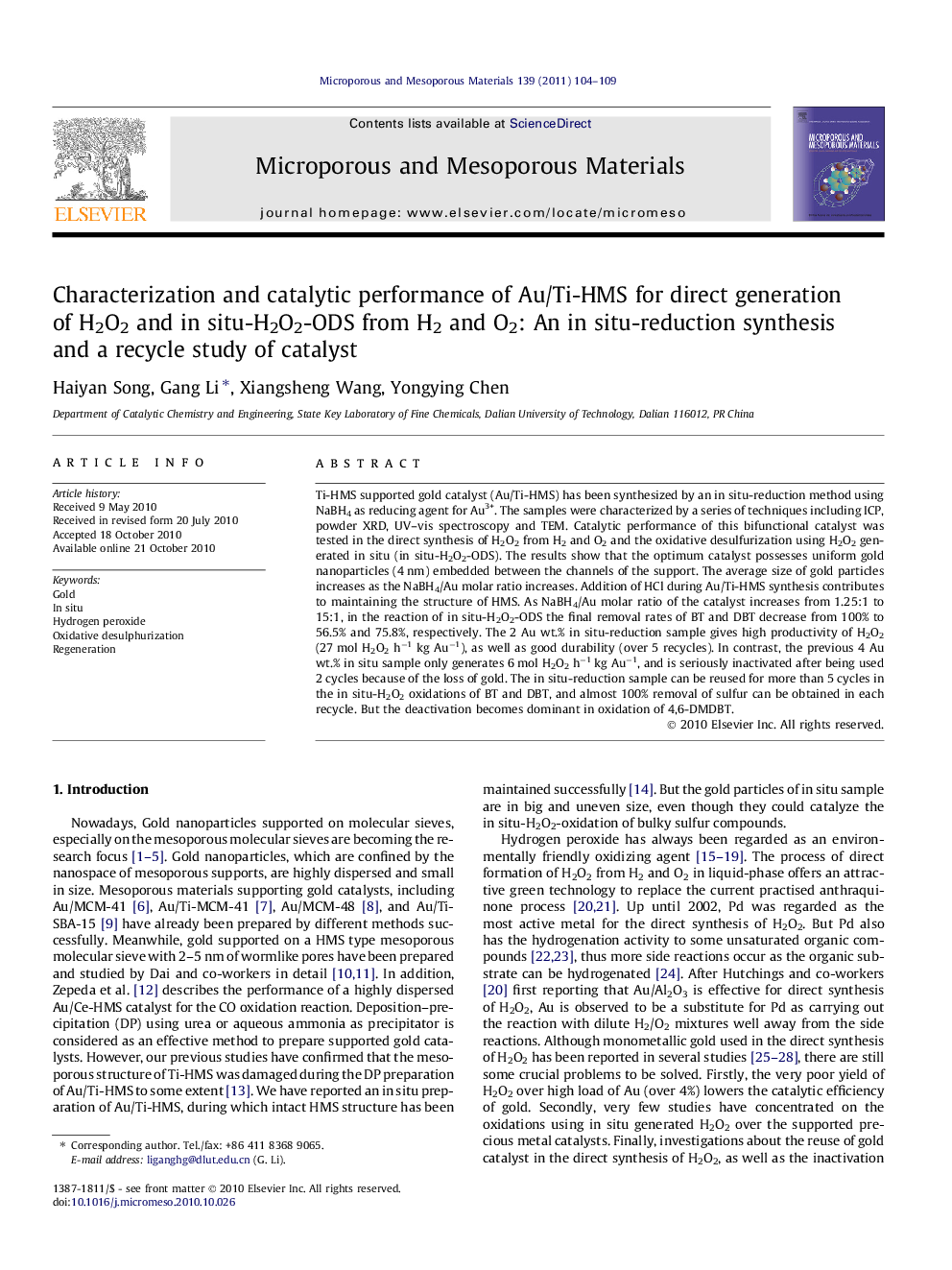| Article ID | Journal | Published Year | Pages | File Type |
|---|---|---|---|---|
| 75008 | Microporous and Mesoporous Materials | 2011 | 6 Pages |
Ti-HMS supported gold catalyst (Au/Ti-HMS) has been synthesized by an in situ-reduction method using NaBH4 as reducing agent for Au3+. The samples were characterized by a series of techniques including ICP, powder XRD, UV–vis spectroscopy and TEM. Catalytic performance of this bifunctional catalyst was tested in the direct synthesis of H2O2 from H2 and O2 and the oxidative desulfurization using H2O2 generated in situ (in situ-H2O2-ODS). The results show that the optimum catalyst possesses uniform gold nanoparticles (4 nm) embedded between the channels of the support. The average size of gold particles increases as the NaBH4/Au molar ratio increases. Addition of HCl during Au/Ti-HMS synthesis contributes to maintaining the structure of HMS. As NaBH4/Au molar ratio of the catalyst increases from 1.25:1 to 15:1, in the reaction of in situ-H2O2-ODS the final removal rates of BT and DBT decrease from 100% to 56.5% and 75.8%, respectively. The 2 Au wt.% in situ-reduction sample gives high productivity of H2O2 (27 mol H2O2 h−1 kg Au−1), as well as good durability (over 5 recycles). In contrast, the previous 4 Au wt.% in situ sample only generates 6 mol H2O2 h−1 kg Au−1, and is seriously inactivated after being used 2 cycles because of the loss of gold. The in situ-reduction sample can be reused for more than 5 cycles in the in situ-H2O2 oxidations of BT and DBT, and almost 100% removal of sulfur can be obtained in each recycle. But the deactivation becomes dominant in oxidation of 4,6-DMDBT.
Graphical abstractFigure optionsDownload full-size imageDownload as PowerPoint slideResearch highlights► Au/Ti-HMS is synthesized by in situ-reduction method using DDA as organic template and NaBH4 as reducing agent. ► Gold nanoparticles are embedded between channels of the support. Interaction between gold particles and support is strengthened. ► The catalyst exhibits attractive stability and recycled performance in the direct synthesis of H2O2 and in the in situ-H2O2-oxidation of BT and DBT.
